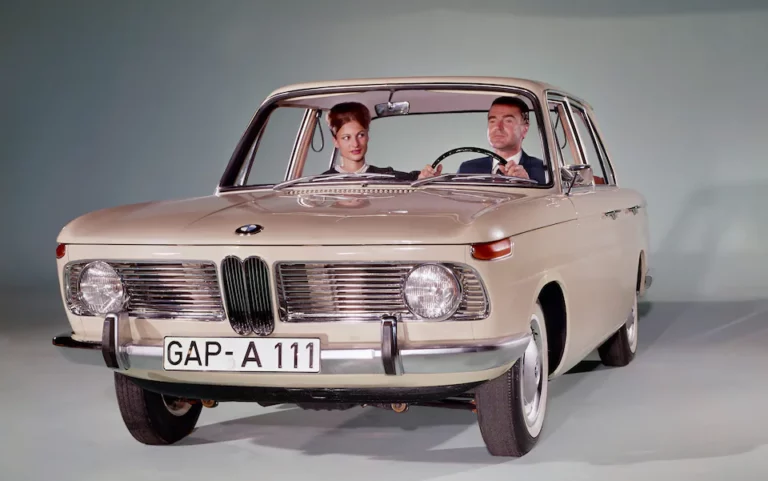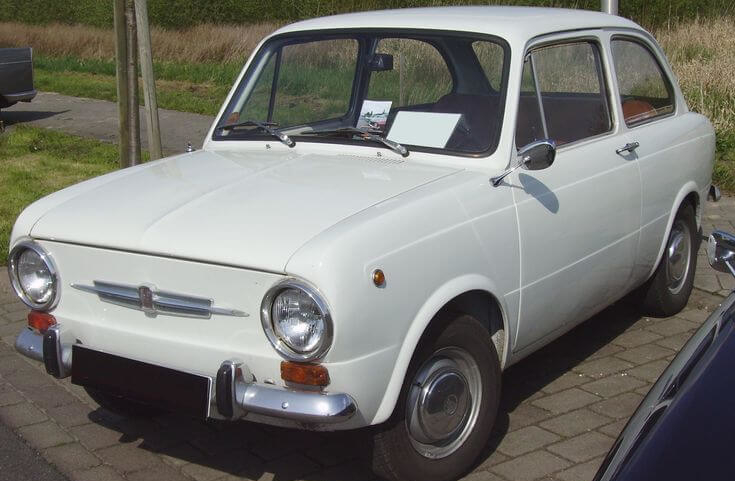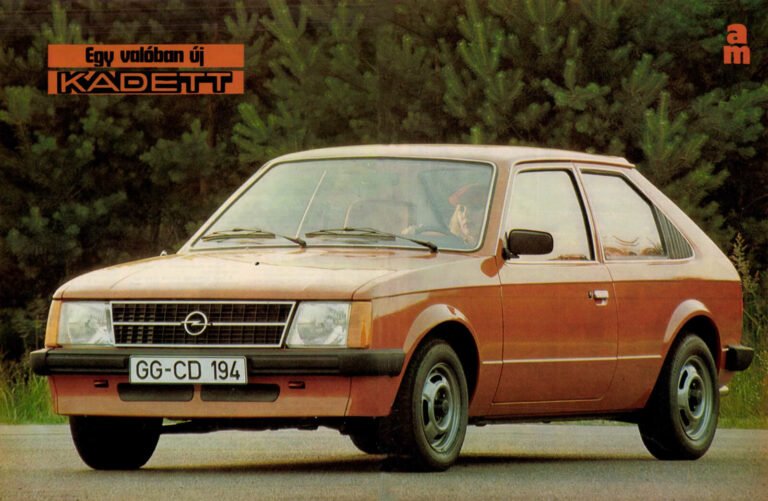1975 - Ford Capri II Ghia test 1.
In 1975, a giga-length and in-depth test was published in Auto-Motor of the second-generation Capri, which debuted in 1974. Tibor Almássy, the lucky journalist, had the opportunity to drive the car for almost 6,500 km for a month, and he shared his experiences with the reading public in two parts, in the 21 October and 6 November 1975 AM issues.
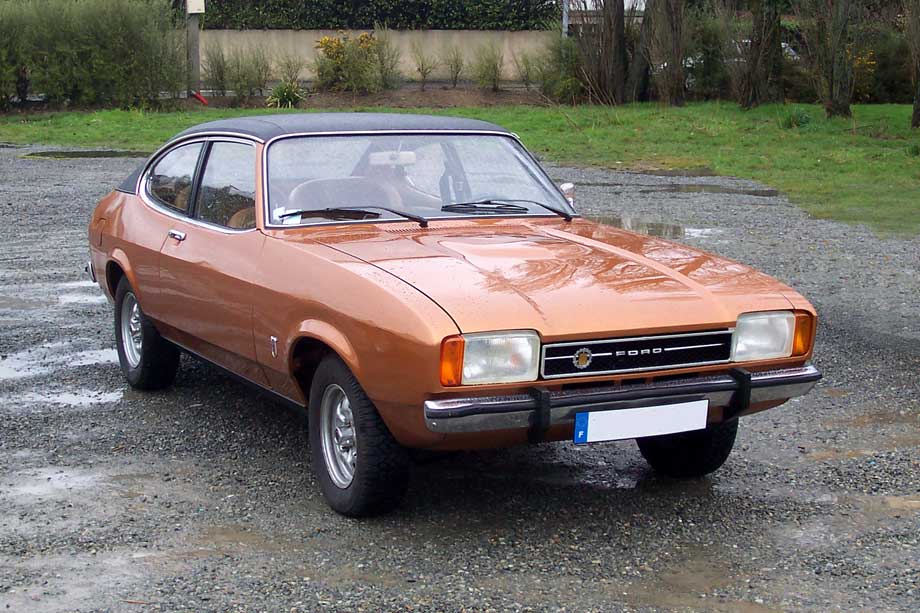
Ford Capri 1974 Image source: wiki / PhG - Photographie en provenance de mon site par Utilisateur:hornman sur la page http://www.capri-legend.com
In the mid-seventies, the 1973 oil crisis meant that cars that were suitable for everyday use in every respect were needed. As Ford sold 1.2 million of the first generation Capri, the factory decided not to discontinue the model. The Capri II was launched in 1974, with a shorter engine compartment than its predecessor, a larger passenger compartment and, typical of hatchbacks, a third door at the rear instead of the traditional boot lid. By the standards of the time, the second-generation Capri was a very advanced car with very little room for error. The engine range for models produced in Germany was quite wide, with in-line four-cylinder engines available in 1.3-litre (55 bhp), 1.6-litre (72 bhp), 1.6-litre GT (88 bhp) and 2.0-litre (99 bhp), while V6 engines included the 2.3 litre (108 hp) and the 3.0-litre from the UK were available.
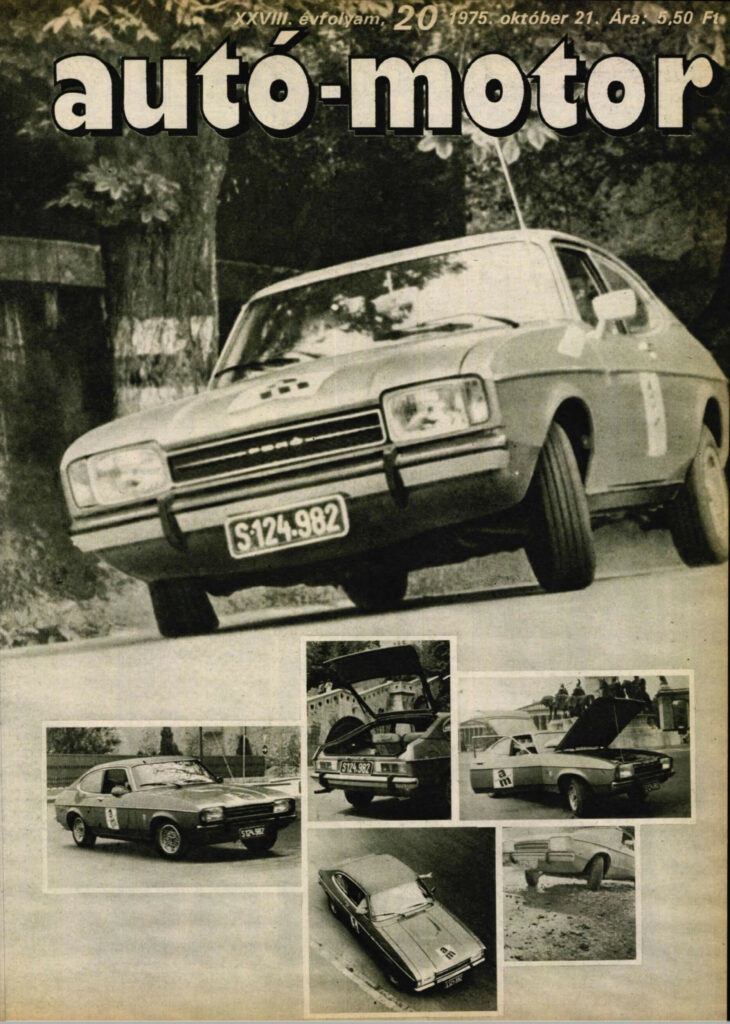
In the 1975 paper, quoted verbatim below, the 2.3 litre, 108 horsepower Ghia-equipped model is described:
♠
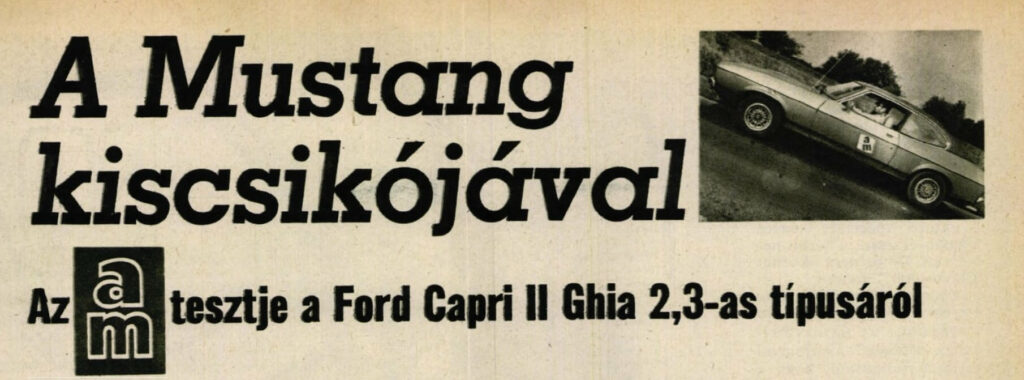
I was able to see for myself, in a forced way, that the Capri II really does have a better view backwards than its predecessor. The newer version - as the title suggests - was only available for a one-month test drive from Ford's Vienna office, and I was only able to drive it backwards out of the crowded garage next to the Opernring onto the streets of Vienna. In addition, I drove it almost to the border station in Bergesholm without knowing what it looked like from the outside.
When I set off, the car loitering in a dark corner of the garage had only the distinctive outline of the Caprik and the number plate to suggest that, among the many representative cars in the garage, this must be the one I could drive home.
All I got was one key to this expensive car. It opened and closed everything. And the same key was also a skeleton key. I didn't even have to worry (it would have been difficult in the dark garage corners) about which side of the key to put in the lock: either profile fitted, it opened, closed - and started - perfectly. Well, simplifying such a really small car accessory can save you a lot of annoyance.
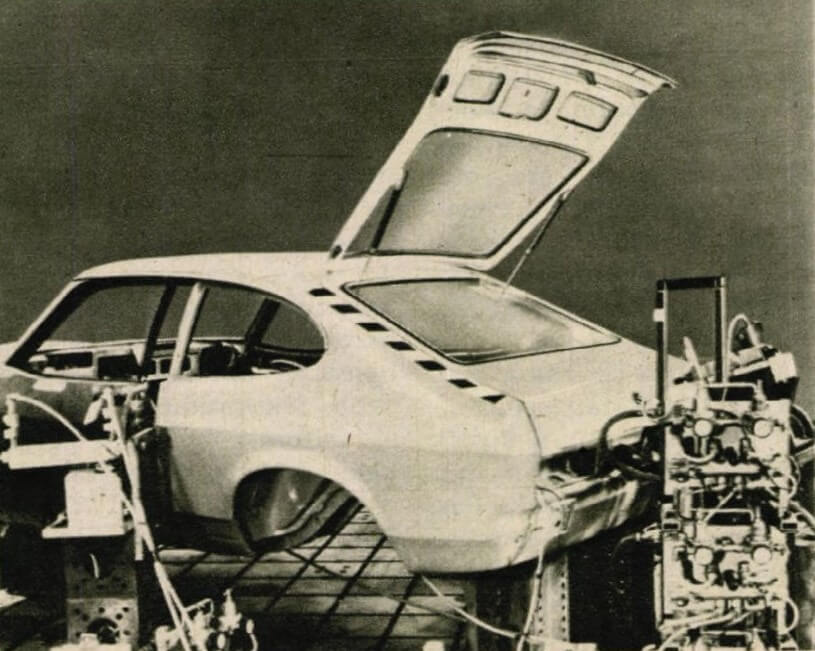
Text accompanying the image: one of the promising new features of the Capri II is the third, or rear, door. To create it and test it, a special treadmill was built in the laboratory, which was used to open and close the door many thousands of times under normal conditions of use. This is how the final version was developed. At first glance, it does not even stand out as it blends harmoniously into the body. For this third door, the designers have also used a sleight of hand: the hinges are positioned between the roof and the frame - over a very small area - so that they are not visible from the outside or the inside, while at the same time they do not restrict the movement of the passengers or the positioning of luggage.
The interior is particularly exclusive, yet not ostentatious. That's how I felt when I first got into the car and when I drove the last few kilometres. With its distinctive two-seater, leather-wrapped and even separately padded central steering wheel, the 'Ghia' name, with its hand-engraved, handwriting-like lines, subtly suggested that this 2,300cc car, with 108bhp and a dynamic acceleration to 60mph in 11.2 seconds, and capable of doing 60mph, was the most elegant, best-performing super version of the Capri II. It is also the 'blue-blooded' branch of the Capri dynasty, whose character has been shaped to the finest detail with exquisite taste, expertise and love in the famous design workshop in Turin. Just looking at the interior of the car, the sumptuously soft velour carpet, the seat upholstery, the dashboard, the upholstery on the sides and the roof, the leather-wrapped steering wheel, gearbox and handbrake are all harmoniously integrated into the elegant interior in terms of shape, colour and the choice of materials used to create and cover them. From the seats to the simple push buttons, every detail is designed for comfort, safety and well-being. Even after a thorough and truly critical examination, I had to admit that there is not really a single inappropriate, self-serving ornament in this supercar: only accessories that are needed or could be needed. And all of it in the most beautifully designed and practical arrangement possible.
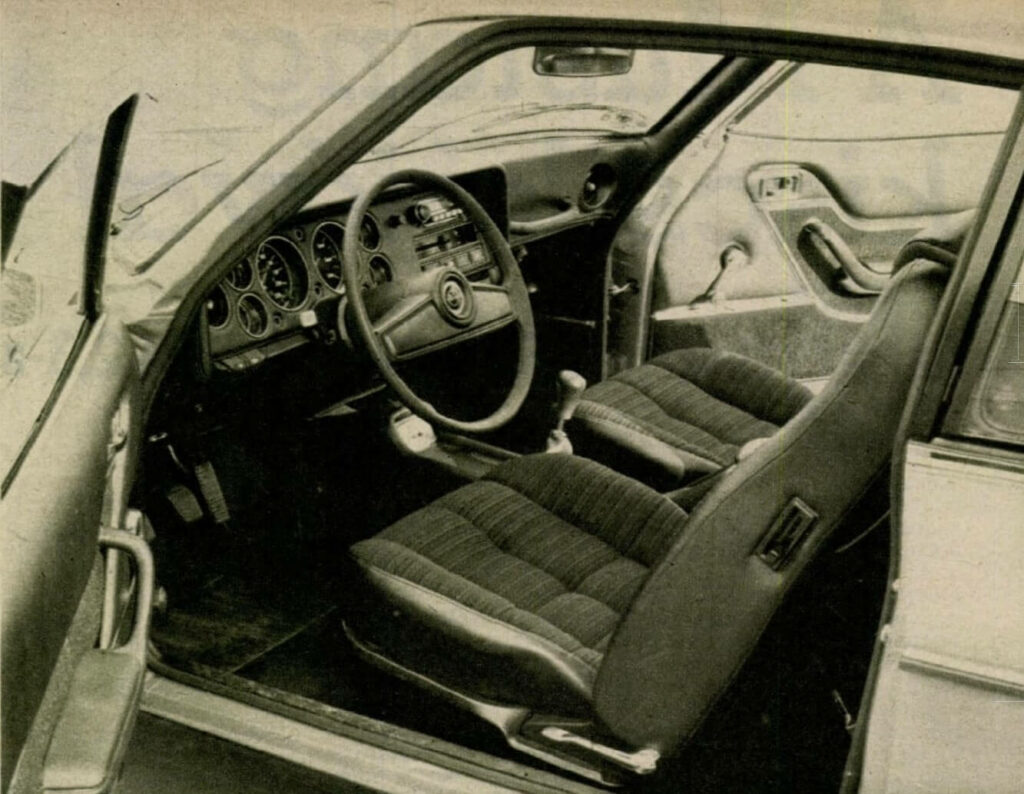
The dashboard and driver's seat. Even the smallest detail is designed for comfort, safety and well-being.
There is little doubt that the first Capri version was a success in every respect. The fact that well over one million have been produced and sold since 1969 is proof of this. But with the new member of the family, the Capri II, presented below, Ford's designers sought to prove that they had not rested on their laurels: the 'Capri idea' was - consistently - developed further. As a result, the Capri II is even better looking, more comfortable, safer and in many ways more practical than its predecessor.
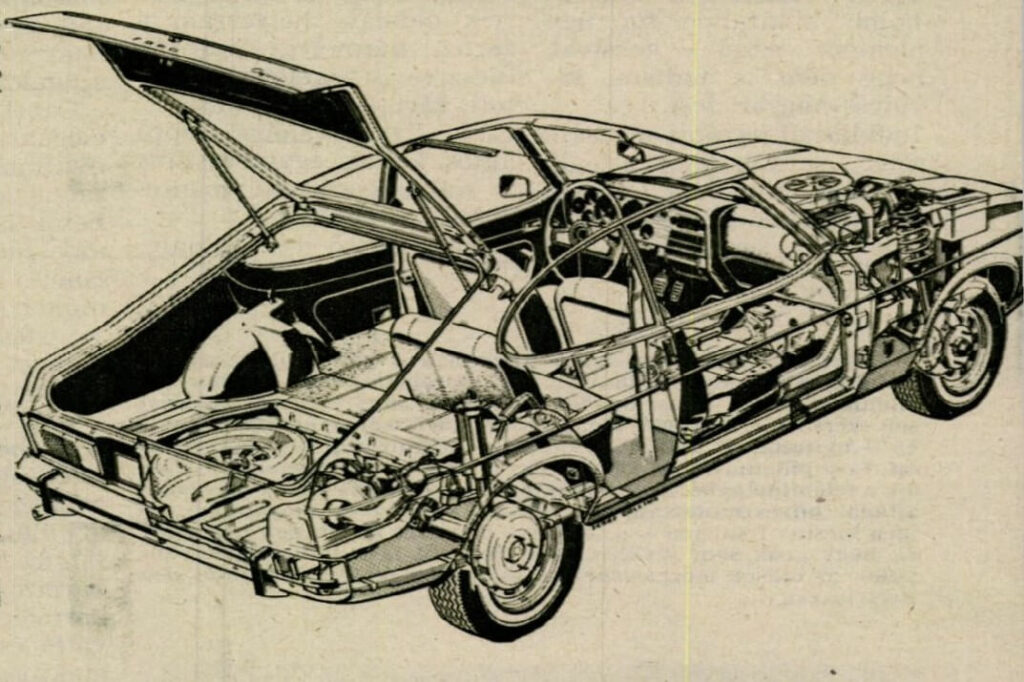
More than two million man-hours of design work and two thousand new or improved structural elements resulted in the Capri II. The X-ray drawing shows the structural design of the car.
It is undoubtedly a technical advance on the road begun with the first Capri to a more modern version of a sporty-looking family car. In the Capri II, tried and tested technical solutions have been combined with a new and more elegant look. All this is complemented by a well thought-out interior with lots of ideas and interesting features. The Capri I versions have proved to be well-balanced and well-constructed cars, as we have seen in our previous and equally long-lasting tests. Nevertheless, I could sense from the first kilometres that the Capri II (and the exclusive - 'Ghia' version) was in many ways superior to its predecessor.
The textile-covered deep seat behind the safety steering wheel, the pedals with a good-sized tread surface, the instruments, controls and controls on the dashboard were in the familiar and familiar places of the previous versions tested.
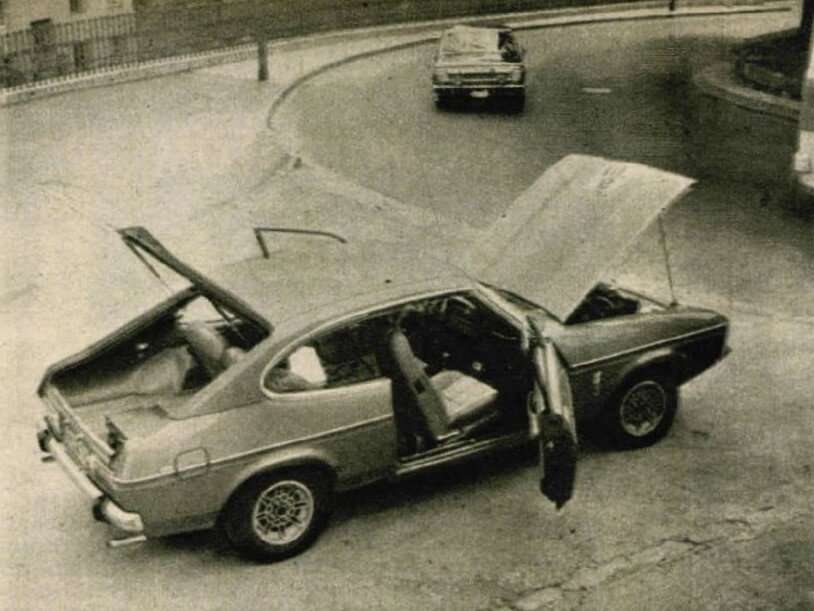
With doors that open wide, getting in and out and stowing luggage is no problem at all. And it's just as easy to get a look inside the engine compartment.
Well, the third one, the combination rear door window, actually gave me a better view to the rear. But I could still only feel the rear of the car, its rear dimensions; I couldn't see it. Likewise, when driving forwards, the nose of the car, which extends far forward and slopes discreetly downwards, cannot be seen from behind the wheel (or, of course, from the other seat), so you have to learn to feel the exterior size of the Capri II while driving. But this shouldn't be a particular problem for such a truly 'taut' car. On my longer distance journeys, the so-called 'long strides', I found that the shell seats, which also offer good lateral support and are fitted with a built-in adjustable support to protect against whiplash, still felt comfortable even when travelling for several hours in a row.
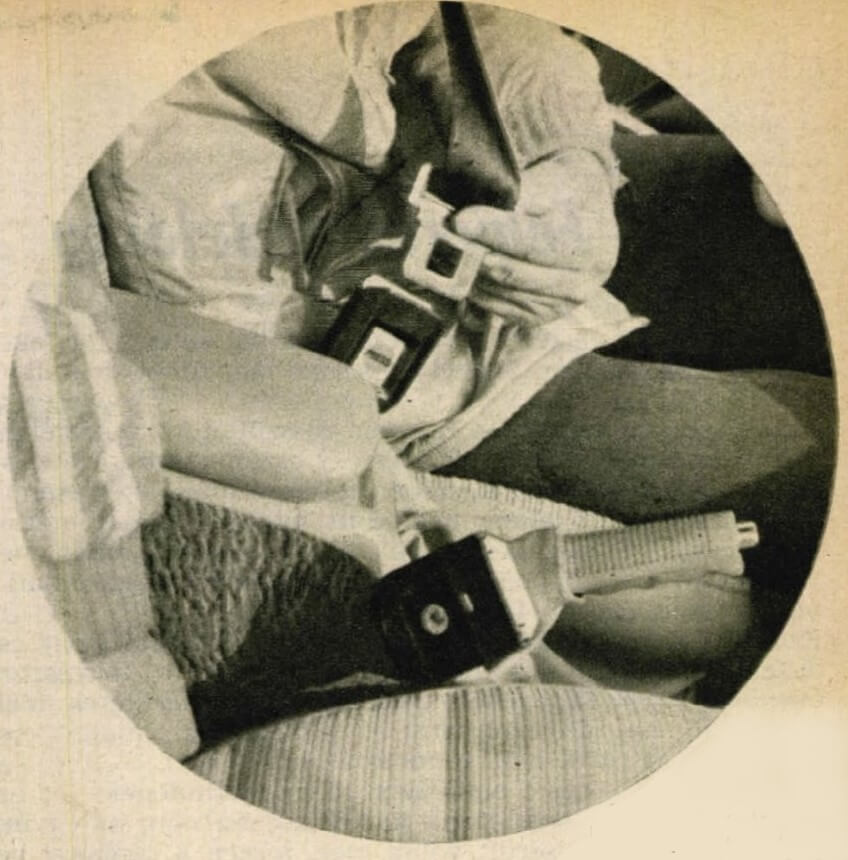
Gives you full freedom of movement while driving: a true seat belt - not a harness.
At the same time, the passenger compartment can also be seen as a safety cabin, with its rich interior upholstery, carpeting and energy-absorbing cushioning. The subtly shaded dashboard, richly equipped with indicators, clocks and switches, the steering wheel, the short and sporty gearshift, the handbrake and even the most basic gear knob are all designed to blend discreetly and harmoniously into the elegant surroundings. Of course, the car is priced to suit this milieu.
The version we have made available for testing is worth around £3000. For that money, you can buy three other mid-range cars that are modern, comfortable and safe. So when the adjective 'super' is mentioned for some reason in the case of the Capri II 'Ghia', the difference in quality and price should not be overlooked.
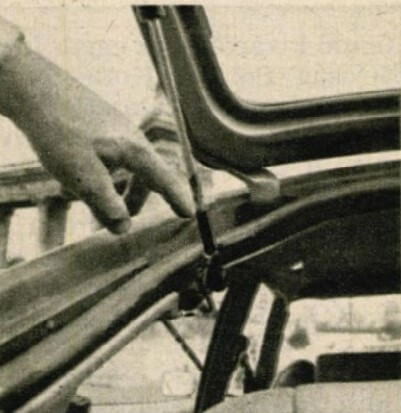
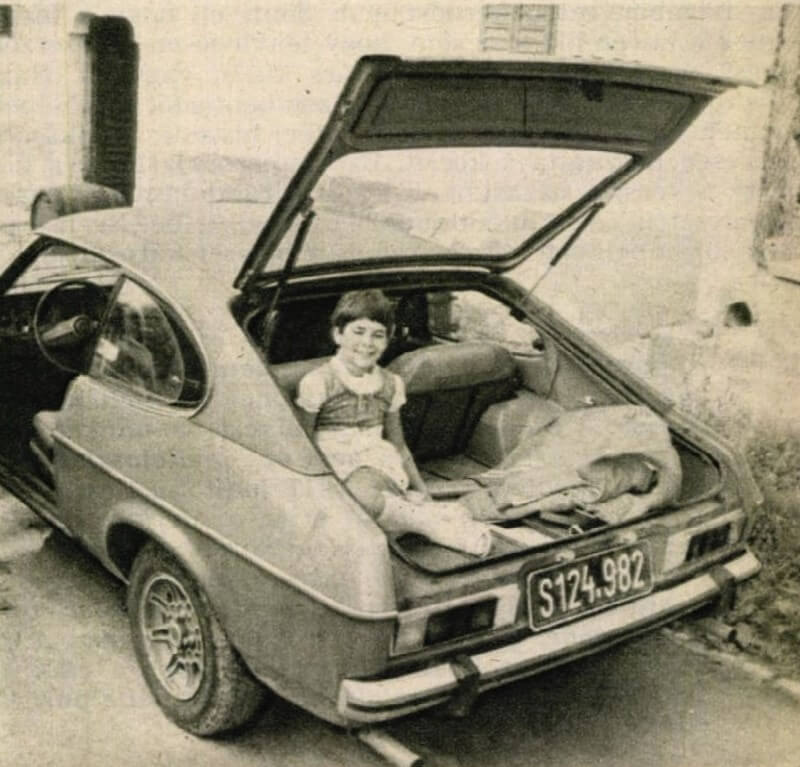
The third (rear) door opens like a breath of fresh air, with the throttle: a large loading area opens up. There's plenty of room... .
The factory-installed seat belt, which allows full freedom of movement, offers the occupant almost complete freedom of movement. It cannot be ignored: it must be used. But it doesn't take as long to get it ready as it takes to read this sentence. The belt can be easily detached from the hook on the door pillar with one hand, and with a steady motion, it can be switched into the momentary lock. The shutter-operated automatic safety system (which only locks when the car suddenly slows down) is recessed into the side walls of the passenger compartment. I drove with my seatbelt fastened at all times, both in town and on the highway, during the 6,500 kilometres of domestic road tests. It has become a reflex that when I open and close the door, I simultaneously, with a gesture of the other hand, switch on the seat belt while sitting in the car. I am convinced that new cars (irrespective of make and category) should nowadays be fitted with a seat belt system of this type, which gives full freedom of movement while driving. . .
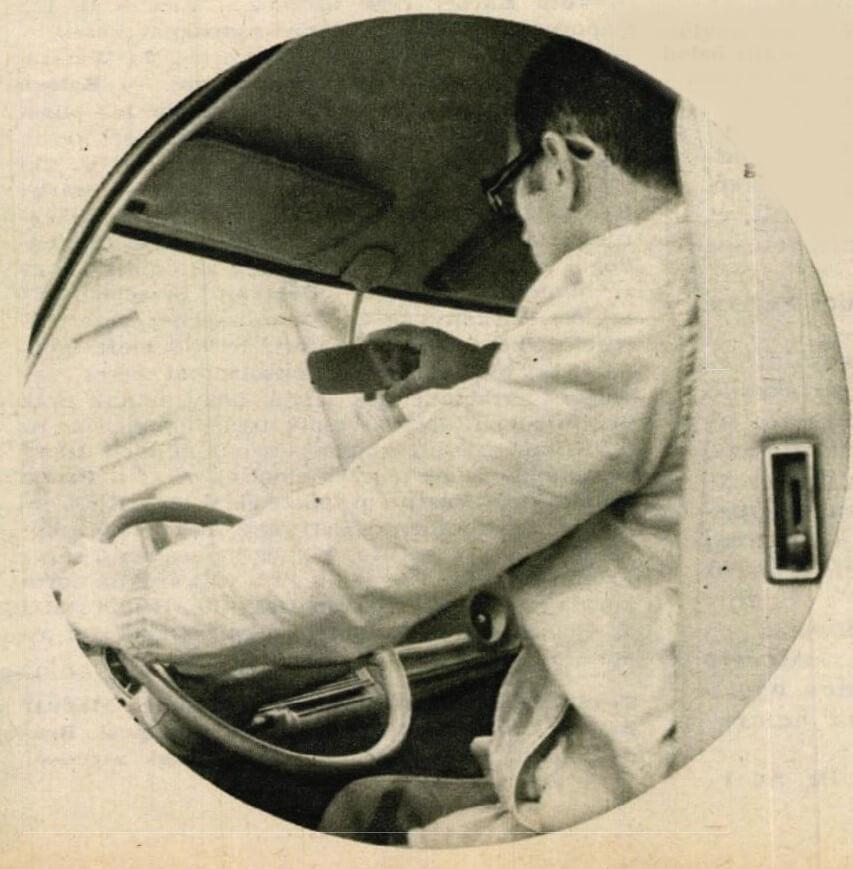
The low-hanging interior mirror "shades" pedestrians in certain situations.
I've also travelled in cool, bad weather, so I've found that while most cars usually have problems with condensation, this one doesn't. The heated rear window and washer - and separate wiper - provide an invaluable sense of security. The front windscreen glass is kept clean by a two-stage wiper, washer and blower system to circulate warm air.
I have been caught in torrential rain a few times and found that the wiper's faster speed is not satisfactory: not enough to see safely through the curtained window. The exterior and interior mirrors - specially polished and curved - provide good orientation. The positioning of the exterior mirror is good, but the interior is not the most fortunate. Particularly when cornering, I found that the relatively low-hanging mirror panel on the arm could, at certain angles, completely obscure those stepping in front of the car. But again, a particularly valuable virtue of both vehicles is that they never resonated under any circumstances, not even on the roughest macadam roads in bumps. They always showed the traffic behind them clearly and clearly.
A tachometer is a natural accessory for the truly elegant Capri II Ghia. And as the version we tested had a 2,300cc, 108bhp engine, the tachometer clock helped a lot in achieving a more balanced torque shift and more economical fuel consumption. This is probably also responsible for the fact that during the domestic test of more than 6,500 kilometres, the car did not use more than 9.2 litres per 100 kilometres.
consumed more of the extra-super. With the 2300cc engine, this is really worth noting, not a bad consumption figure. Especially when you consider that our Capri II - our Ghia - was practically a factory new example. We had the special privilege of taking delivery of it at just 4060 kilometres per hour (the 4000 kilometres were clocked up on the Ford test track in Cologne), so we were the first to test drive the car. The fact that we always drove at the maximum permitted speed should not be overlooked when it comes to fuel consumption. Provided, of course, that the road and traffic conditions allowed for this. The technical characteristics of the car will be covered in our next article on testing.
Tibor Almássy
